Patrick Heller: COMEX and London Bullion Market Exchange are at heightened risk of default
Take That You Silver Bulls
By Patrick A. Heller | Numismaster
In my judgment, the extreme measures taken by the U.S. government to suppress gold and silver prices in the past week are signs that the COMEX and London Bullion Market Exchange are at heightened risk of default. If they were not at a greater risk of default, the U.S. government would have pursued less blatant tactics that they have used in the past such as sneaking physical gold and silver on to these exchanges. That such a tactic was not used can be interpreted as meaning that supplies of physical gold and silver are becoming more difficult to locate.
Supplies of physical silver are getting much tighter. Those seeking to purchase quantities of U.S. silver Eagles, Canadian silver Maple Leaves and 1- and 10-ounce silver ingots can expect delivery delays of at least four weeks. There are at least three primary distributors of U.S. silver Eagles that have stopped accepting orders for future delivery. Premiums are rising on almost all forms of bullion-priced physical silver. Even COMEX bonded warehouses are reporting record low levels of registered silver inventories.
I expect the current attack on gold and silver prices to run its course quickly, but it might take a week or two to overcome this massive assault. In the past, the trading of paper contracts such as on the COMEX and London markets had the greatest effect on gold and silver prices. Now it looks to me that we are getting close to the time when the physical market will have a greater impact on precious metals prices. Once this happens, gold reaching $2,000 and silver maybe getting to $100 will be definite possibilities, maybe even this year.
Remember, in an overall boom market for gold and silver, there will be periodic bouts of profit-taking, where prices dip for a short time. Also, as I have explained multiple times before, the U.S. government, its trading partners and its allies have a huge incentive to suppress gold and silver prices.
Those interested in precious metals need to be able to identify whether price drops are indicative of a genuine market top, a temporary bout of profit-taking, or if they are simply the result of price manipulation at the behest of the U.S. government.
The basic reason the U.S. government wants to hold down gold’s price is that it is basically a report card on the U.S. dollar, the US government and the U.S. economy. If the price of gold is rising, that is a sign that one, two, or all three are headed in the wrong direction. Silver often trades in sympathy with gold. If the prices of gold and silver were to rise, that would eventually force the U.S. government to pay higher interest rates on its soaring debt. A fall in the value of the U.S. dollar (the counterparty to rising gold and silver prices) would also lead to much higher consumer prices.
The U.S. dollar has been incredibly weak in the past few weeks. Adjusting for inflation, it is now at its lowest level since the U.S. government allowed its value to float against other currencies starting in 1973. Even without adjusting for inflation, the U.S. Dollar Index, a measure of the value of the dollar against a market basket of other currencies, has reached a three-year low and is not that far from its all-time lowest level.
In response to the weak dollar and other factors, the prices of gold and silver soared until near to the close of COMEX trading last Friday. Gold reached another all-time high (ignoring inflation, of course). Silver came close to breaking above its January 1980 all-time high. The indications were that gold might soon breach $1,600 and silver would top $50 and set a new all-time high price. Once these levels might be achieved, there were signs that further price rises might accelerate.
As I write this Tuesday, both gold and silver have backed off from the highs achieved in late Friday trading. Is this drop a sign of falling after reaching a peak (as the U.S. government would prefer the public to believe), temporary profit-taking, or were the metals pushed down by aggressive U.S. government price suppression tactics?
The information available thus far indicates that virtually the entire decline in prices can be attributed to the desperate actions by the U.S. government, its trading partners, and allies. As prices started to drop there was some profit-taking selling by “weak hands” buyers locking in profits, but this has not been significant.
Let me give you some of the more obvious gold and silver price manipulation tactics of the past week or so.
As gold or silver prices are rising, one tactic to try to cap the rise is to raise margin requirements on leveraged accounts on the COMEX. Margin requirements were raised on some COMEX silver contracts last Tuesday. Although that tactic had the temporary effect of pushing down prices on the day that the COMEX May silver options expired, silver’s price started rising again afterwards.
Both silver and gold prices especially started to climb after Fed Chair Ben Bernanke’s press conference last Wednesday, a sure sign that foreign and domestic investors realized that Bernanke’s remarks did not instill confidence in matters American.
It was obvious that the U.S. government had to take further measures to cap gold and silver prices. Fortunately for the feds, the Tokyo market was closed on Friday and China, Vietnam, and most European markets were closed on Monday. More thinly traded markets magnify the impact of any attempted manipulation.
On Friday, the COMEX, for the second time in one week, imposed a 13 percent increase in silver margin requirements. Late the same day, a subsidiary of TD Ameritrade raised its internal margin requirement for silver contracts to $30,000, more than double the new COMEX margin requirements. Also on Friday, Man Financial Global (MFG) raised its internal margin requirements for its customers holding leveraged silver accounts to $25,000 per contract.
As part of the network of allies working on the suppression of precious metals prices, you need to understand some of the relationships. JPMorgan Chase is the lead trading partner for the Federal Reserve and Goldman Sachs is the lead trading partner for the U.S. Treasury. These firms are intimately involved in helping the U.S. government pass along orders to other trading partners about the execution of tactics designed to meet the goals of the respective agencies. Former top Goldman Sachs officials hold significant positions, including Jon Corzine (CEO of Man Financial Global), Gary Gensler (chair of the Commodity Futures Trading Commission, and William Dudley (president of the Federal Reserve Bank of New York).
The raising of these internal margin requirements had the effect of forcing many customers of these companies to liquidate leveraged accounts.
In addition to the manipulation of trading activity, there were also three storylines fed to the mainstream media on Sunday as supposedly explaining why gold and silver prices should fall. First, the death of Osama bin Laden was claimed to have instantly made the world a safer place, so there was less demand for gold and silver as safe haven assets.
Second, the president of Bolivia in his May Day speech did not announce further nationalization of the country’s mining industry as he has sometimes done in recent years. Opposition to doing so had come from that nation’s miners. Therefore, the threat of a small decline in silver mine production did not come to pass.
Third, China was supposedly backing off its demand to purchase commodities as part of the nation’s efforts to combat rising consumer prices. This story was especially spurious, as the only commodity that experienced a significant price decline was silver.
As would be expected in the circumstances, a large number of sell orders were executed as the Japanese market opened for Monday trading (at 6 p.m. Eastern time zone Sunday evening). Shortly after trading started, the price of silver dropped 12 percent in only 11 minutes. Freely traded markets do not move like this in the absence of major market developments.
While gold was comparatively little affected, it also declined a few percent. Some “weak hands” technical traders, who focus more on price movements than the reasons behind the changes, sold their long gold and silver positions to lock in some profits.
Both prices proved to be more volatile than normal on Monday. Lower prices continued into Tuesday.
This greater price volatility is having the desired impact (from the perspective of the U.S. government) that owning gold and silver are not really a safe haven option for investors. Demand for physical precious metals early this week has been subdued compared to the past two weeks.
Patrick A. Heller owns Liberty Coin Service and Premier Coins & Collectibles in Lansing, Mich., and writes “Liberty’s Outlook”, a monthly newsletter on rare coins and precious metals subjects. Past newsletter issues can be viewed at http://www.libertycoinservice.com. Other commentaries are available at CoinUpdate. He also writes a bi-monthly column on collectibles for “The Greater Lansing Business Monthly”. His radio show “Things You ‘Know’ That Just Aren’t So, And Important News You Need To Know” can be heard at 8:45 a.m. Wednesday mornings on 1320-AM WILS in Lansing (which streams live and becomes part of the audio and text archives posted at http://www.1320wils.com).




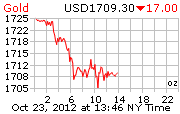
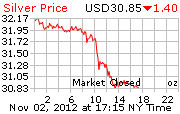
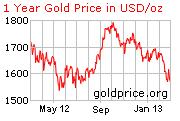
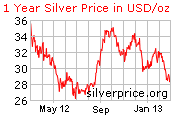
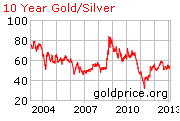
Great Articles, I enjoy reading your blog, I personally think Silver will reach new heights very soon.
Thanks for sharing!
Don Memon